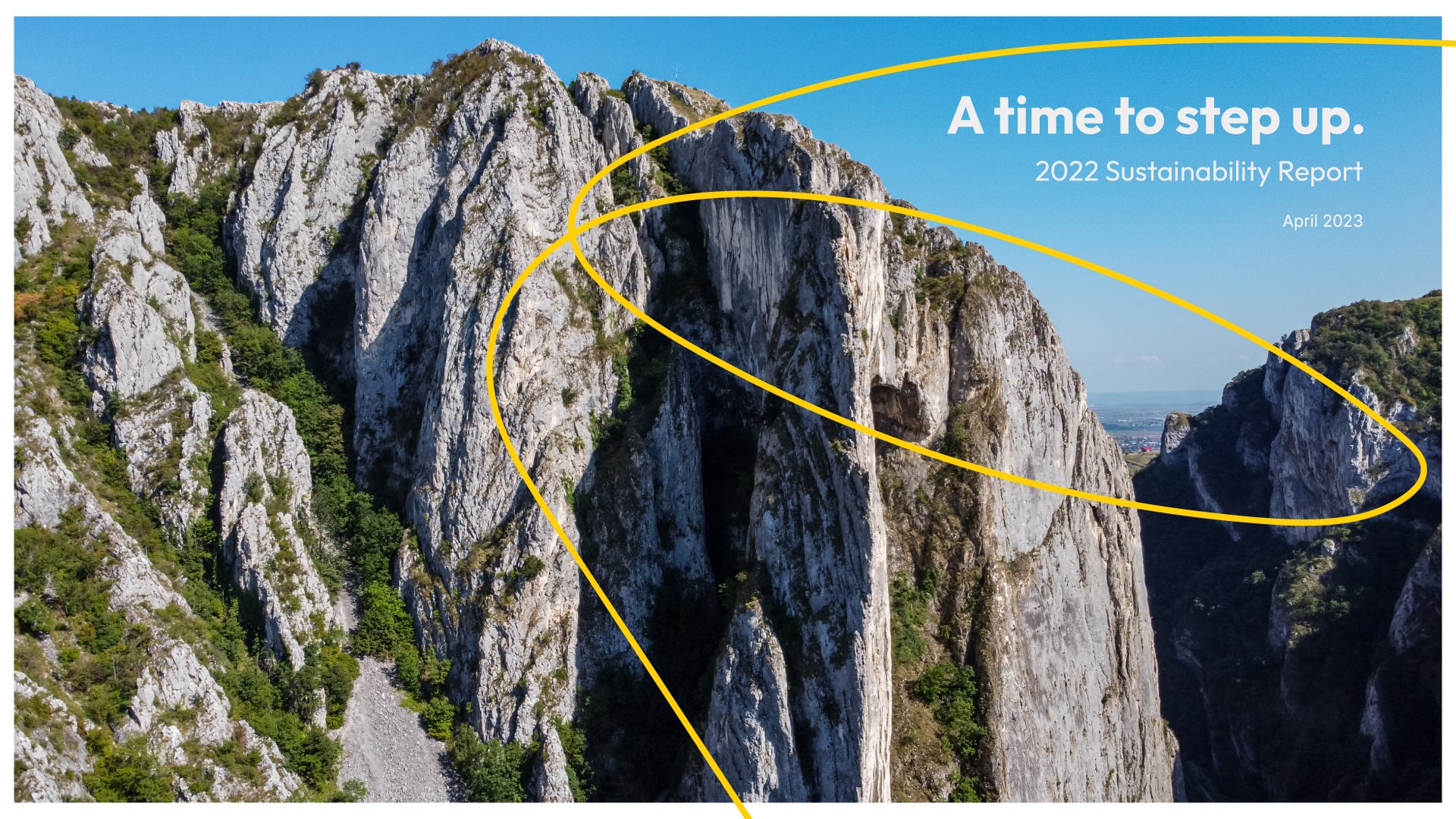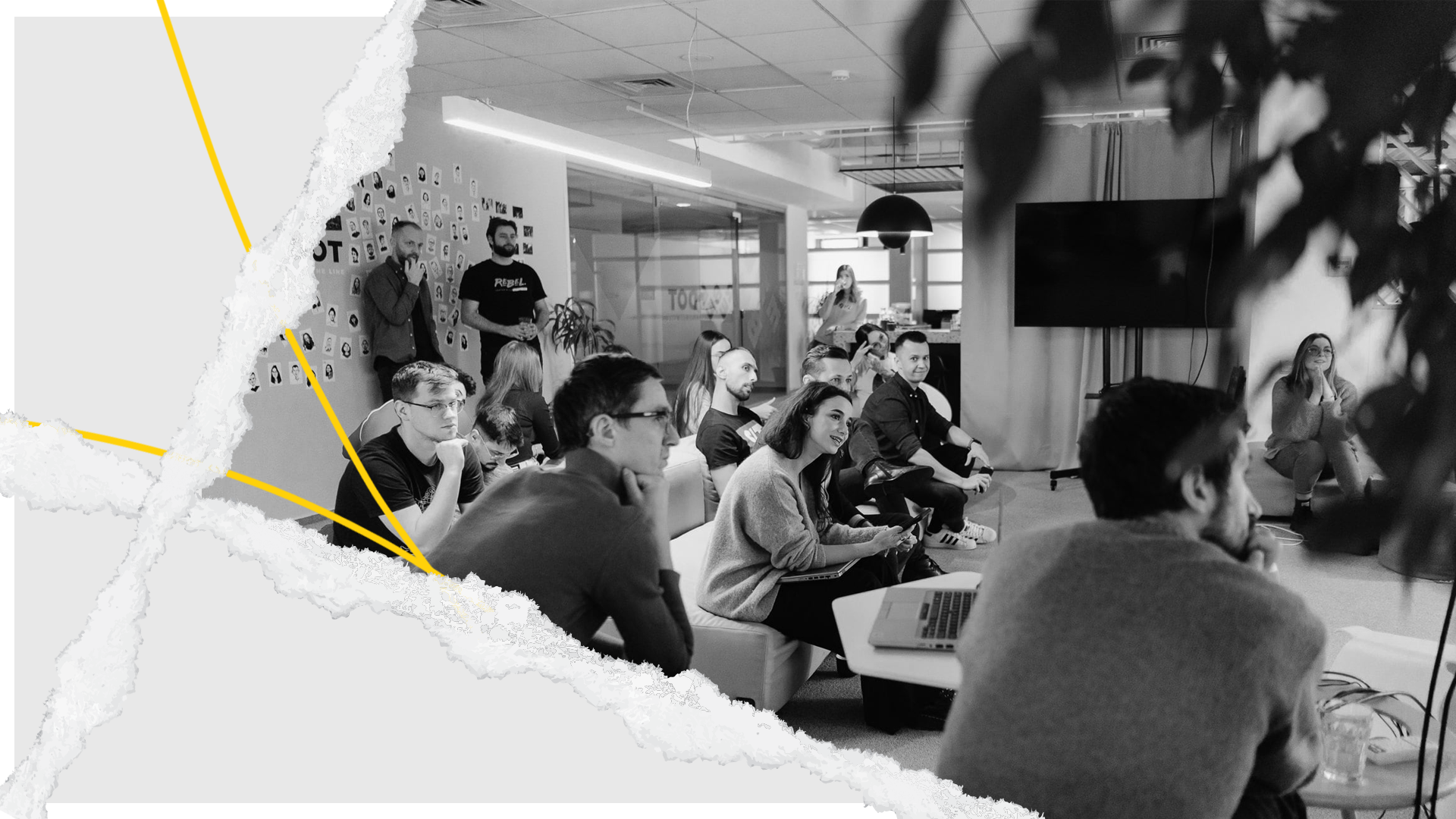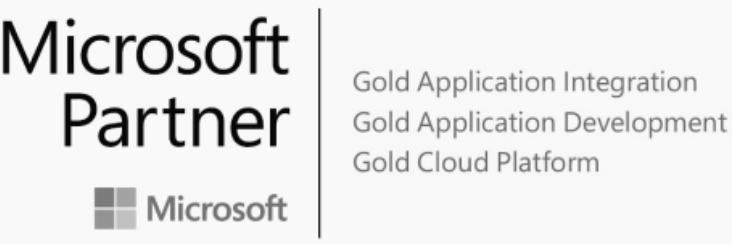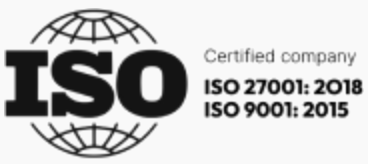As the world becomes more aware of the impact of climate change and is facing an increasing demand for resources, the importance of green energy and sustainability is growing. Businesses and organizations across different sectors, including the energy industry, are looking for ways to reduce their carbon footprint and contribute to a greener future. As a result of this shift, there is a growing interest in exploring innovative solutions that can help accelerate the transition toward a low-carbon economy. One technology that is emerging as a potential solution for the green energy revolution is blockchain.
Blockchain technology has emerged as a potential solution to address some of the challenges associated with the energy transition. Being a decentralized and transparent ledger that enables secure and immutable transactions, it has the potential to transform the energy industry by creating a more efficient and sustainable energy system. Blockchain can enable new models of energy production and distribution, as well as promote energy efficiency, accountability, and sustainability. It can also help address key challenges in the energy sector, such as energy trading, supply chain sustainability, and carbon credits. Blockchain can unlock new opportunities for small businesses and large-scale organizations alike to participate in the green energy market.
This article aims to explore the key opportunities and challenges associated with using blockchain for green energy solutions in Northern Europe. It will provide an overview of the green energy landscape in Northern Europe, and examine the role of blockchain in addressing energy challenges. The article will also provide practical examples of how small businesses and large-scale organizations can leverage blockchain to promote sustainability, energy efficiency and explore the potential benefits, challenges, and risks associated with implementing blockchain-based solutions. Finally, the article will present case studies of successful blockchain-based green energy initiatives in Northern Europe and discuss the future of blockchain in green energy and sustainability.
Understanding the Green Energy Landscape in Northern Europe
Overview of the Northern European Energy Market
Northern Europe is home to some of the most ambitious energy transition plans in the world. The region is characterized by a mix of energy sources, including renewables, nuclear, and fossil fuels. While the share of renewables is increasing, there are still challenges associated with integrating intermittent energy sources into the grid, ensuring grid stability, and balancing supply and demand. Additionally, there are regulatory and financial barriers that limit access to the green energy market for small businesses and new entrants.
Key Challenges and Opportunities
There are several challenges associated with the transition to green energy in Northern Europe, including energy storage, grid integration, and regulatory frameworks. However, there are also opportunities for innovation and growth, including the deployment of new technologies, the development of new business models, and the creation of new jobs and economic value. Inspiring applications of blockchain technology should be considered in the green energy field, as well.
The Role of Blockchain in Addressing Energy Challenges
Blockchain can play a critical role in addressing some of the challenges associated with the energy transition in Northern Europe. By providing a decentralized and transparent platform for secure data sharing and transactions, blockchain can promote energy efficiency, accountability, and sustainability, as well as enable new models of energy production and distribution. Blockchain can also help unlock new opportunities for small businesses and new entrants to participate in the green energy market.
Blockchain Use Cases for Green Energy in Small Businesses and Large-scale Organizations
Decentralized Energy Trading and Grid Management
Blockchain can enable decentralized energy trading and grid management, allowing small businesses and households to generate and trade energy with each other directly. This can help reduce energy costs, increase grid stability, and promote energy efficiency. Some of the key use cases for blockchain in decentralized energy trading and grid management include:
1. Peer-to-peer (P2P) Energy Trading
Blockchain can enable P2P energy trading, allowing small businesses and households to sell excess energy back to the grid or trade energy with each other directly. For instance, a company called Power Ledger has developed a blockchain-based platform that allows individuals and businesses to trade solar energy with each other in real-time, without intermediaries like energy companies. This can help reduce energy costs, increase grid stability, and promote energy efficiency.
Traceability of Green Energy: Blockchain can help track the origin and movement of renewable energy from the source to the end user, ensuring transparency and accountability in the supply chain. For example, a Norwegian company called Vakt has developed a blockchain-based platform that enables the tracking of renewable energy certificates, allowing buyers to verify the source and authenticity of the green energy they purchase.
2. Demand Response and Load Balancing
The implementation of Demand Response and Load Balancing in the context of green energy solutions powered by blockchain technology holds immense potential for small businesses and large-scale organizations in Northern Europe. This innovative approach allows energy providers to optimize their energy generation and distribution to meet the ever-changing energy demands of the market, resulting in reduced energy costs and increased energy efficiency. Additionally, it enables energy consumers to actively participate in the electricity market by adjusting their energy consumption based on real-time supply and demand. With the advent of blockchain technology, the integration of Demand Response and Load Balancing has become more secure, seamless, and transparent, paving the way for a more sustainable and decentralized energy future in Northern Europe.
Blockchain can be used to incentivize consumers to adjust their energy usage during times of high demand, thereby reducing the need for fossil fuel-based power plants. For example, a German company called Next Kraftwerke has developed a blockchain-based platform that allows households and businesses to sell their excess energy back to the grid during peak demand periods.
These are just a few examples of how blockchain technology can be harnessed for green energy solutions in Northern Europe. The possibilities are endless, and small businesses and large-scale organizations alike can benefit from this innovative approach to energy management.
3. Grid Modernization and Infrastructure Management
Grid Modernization: Blockchain technology plays a pivotal role in grid modernization efforts, enabling the integration of renewable energy sources and the optimization of grid infrastructure. By leveraging blockchain’s decentralized nature and smart contracts, grid operators can enhance the efficiency and reliability of energy distribution. For instance, blockchain-based microgrids can enable peer-to-peer transactions and localized energy trading, reducing dependency on centralized power systems and promoting energy independence.
Infrastructure Management: Blockchain offers a robust solution for managing energy infrastructure by facilitating secure and transparent transactions, asset tracking, and maintenance records. Smart contracts can automate processes such as repairs and equipment maintenance, ensuring timely interventions and reducing downtime. Additionally, blockchain’s immutable ledger enables accurate record-keeping of infrastructure assets, simplifying audits, and enhancing overall operational efficiency.
By leveraging blockchain technology for grid modernization and infrastructure management, Northern European countries can pave the way for a sustainable and resilient energy ecosystem. Small businesses and large-scale organizations can benefit from increased renewable energy integration, improved grid reliability, and streamlined infrastructure operations.
The potential for enhanced energy efficiency, cost savings, and a greener future is substantial, making blockchain a powerful tool in transforming the energy landscape of Northern Europe.
Transparent Renewable Energy Certificates (RECs) and Guarantees of Origin (GOs)
1. Simplified REC and GO Issuance and Tracking
By leveraging blockchain technology for transparent RECs and GOs, Northern Europe can establish a robust and reliable system for tracking renewable energy generation, ensuring credibility and promoting investments in clean energy. The simplified issuance and tracking processes, enhanced trust and transparency, and the encouragement of renewable energy investments contribute to the growth and development of a sustainable energy sector in the region.
Blockchain technology simplifies the issuance and tracking of Renewable Energy Certificates (RECs) and Guarantees of Origin (GOs). RECs and GOs provide proof that a certain amount of energy has been generated from renewable sources. By leveraging blockchain’s transparent and immutable nature, the entire lifecycle of RECs and GOs can be recorded, from issuance to retirement. This streamlines the process, reduces administrative burdens, and ensures the accuracy and integrity of renewable energy claims.
2.Enhanced Trust and Transparency
Blockchain-based systems for RECs and GOs instill transparency and trust in renewable energy markets. The decentralized nature of blockchain eliminates the need for intermediaries and provides a shared, tamper-proof ledger accessible to all stakeholders. This allows consumers, energy producers, and regulators to verify the origin and authenticity of renewable energy, promoting transparency and reducing the risk of fraud or misrepresentation.
3.Encouraging Renewable Energy Investments
Blockchain technology can incentivize and encourage investments in renewable energy projects. Through tokenization, blockchain enables fractional ownership and facilitates crowdfunding of renewable energy initiatives. Investors can purchase tokens representing a share in a renewable energy project, allowing for broader participation and democratizing the investment landscape. This not only increases the availability of funds for renewable energy projects but also fosters community engagement and support for sustainable initiatives.
Carbon Credits and Emissions Trading
Utilizing blockchain technology for carbon credits and emissions trading in Northern Europe holds significant potential. The efficient and transparent carbon market, coupled with incentives for emissions reduction, can drive sustainable practices among businesses and industries. Furthermore, by facilitating cross-border carbon trading, blockchain can foster international collaboration in tackling climate change, enabling the exchange of carbon credits between countries and promoting a global shift towards a low-carbon economy.
1. Efficient and Transparent Carbon Market
Harness the power of blockchain technology to create a transparent and efficient carbon market. By digitizing carbon credits on a blockchain, RebelDot Romania can revolutionize the way carbon credits and emissions trading are conducted. Our blockchain-based solution ensures accurate tracking, verification, and secure trading of carbon credits, providing a trustworthy platform for businesses to participate in emissions reduction initiatives.
2. Incentivizing Emissions Reduction
Blockchain-based carbon credits and emissions trading systems provide powerful incentives for organizations to reduce their carbon footprint. By participating in emissions trading, companies can earn carbon credits for reducing their emissions below a predefined baseline. These carbon credits can then be sold on the market to entities that need to offset their own emissions, creating a financial incentive for emissions reduction and fostering a culture of sustainability.
3.Facilitating Cross-border Carbon Trading
Blockchain technology simplifies the complexities of cross-border carbon trading. With traditional carbon markets, cross-border transactions can be challenging due to verification processes and different regulatory frameworks. However, by utilizing blockchain’s decentralized and transparent nature, cross-border carbon trading can be facilitated more efficiently. Smart contracts can automate the verification and settlement of transactions, ensuring compliance with international standards and simplifying the process for participants.
Supply Chain Sustainability and Traceability
1. Monitoring Green Energy Production and Distribution
Implementing blockchain technology allows for the effective monitoring of green energy production and distribution across the supply chain. By leveraging transparent and decentralized ledger systems, businesses can track the origin and movement of renewable energy sources. This ensures that energy suppliers adhere to sustainable practices, promote renewable energy usage, and empower consumers to make environmentally conscious choices.
2. Ensuring Ethical and Sustainable Sourcing
By integrating blockchain solutions, companies can ensure ethical and sustainable sourcing practices throughout their supply chains. The transparency and immutability of blockchain records enable verification of raw material origins, labor conditions, and environmental impact. This helps organizations make informed decisions, collaborate with responsible suppliers, and uphold their commitment to social and environmental responsibility.
3.Promoting Circular Economy Principles
Blockchain technology facilitates the promotion of circular economy principles by enhancing traceability and accountability within supply chains. Through blockchain-enabled systems, businesses can track and document the lifecycle of products, from sourcing to disposal. This enables effective resource management, encourages recycling and repurposing, and supports the development of sustainable circular economy practices.
By leveraging the benefits of blockchain technology, businesses can strengthen supply chain sustainability, ensure ethical sourcing, and promote circular economy principles. These initiatives contribute to a more environmentally conscious and socially responsible business ecosystem.
Implementing Blockchain-based Green Energy Solutions
By following a systematic approach to implementing blockchain-based green energy solutions, businesses can unlock the potential for sustainable and transparent energy systems. Assessing readiness, selecting suitable technologies, developing tailored solutions, and ensuring compliance pave the way for successful integration of blockchain in the green energy sector.
Assessing Business Readiness and Potential Benefits
Before implementing blockchain-based green energy solutions, businesses need to assess their readiness for adoption. This involves evaluating their existing infrastructure, technological capabilities, and organizational culture. Additionally, conducting a thorough analysis of the potential benefits and impacts of blockchain implementation is crucial. This assessment ensures that businesses can make informed decisions and leverage the full potential of blockchain technology for green energy solutions.
Identifying Suitable Blockchain Technologies and Platforms
Selecting the right blockchain technologies and platforms is a critical step in implementing green energy solutions. Businesses should evaluate various options, considering factors such as scalability, security, interoperability, and sustainability. Collaborating with experienced blockchain solution providers can help identify suitable technologies and platforms tailored to the specific requirements and goals of the organization.
Developing and Integrating Blockchain-based Solutions
Once suitable blockchain technologies and platforms are identified, businesses can begin developing customized solutions for green energy applications. This involves designing smart contracts, creating decentralized energy trading systems, and integrating data from renewable energy sources. Seamless integration with existing infrastructure and systems is essential to ensure smooth operations and maximize the benefits of blockchain-based solutions.
Ensuring Compliance with Environmental Regulations and Standards
As businesses implement blockchain-based green energy solutions, it is crucial to ensure compliance with environmental regulations and standards. This includes adhering to emission reduction targets, renewable energy certifications, and data privacy regulations. By integrating compliance measures into blockchain solutions, businesses can demonstrate their commitment to environmental responsibility and build trust among stakeholders.
Challenges and Risks Associated with Blockchain-based Green Energy Adoption
By addressing the challenges and risks associated with blockchain-based green energy adoption, businesses can pave the way for successful implementation and widespread adoption. Mitigating data privacy and security concerns, ensuring interoperability, tackling scalability issues, and navigating regulatory uncertainties are key steps toward harnessing the full potential of blockchain technology in the green energy sector.
Data Privacy and Security Concerns
The adoption of blockchain-based green energy solutions introduces new challenges regarding data privacy and security. As sensitive energy-related data is recorded on the blockchain, ensuring secure storage, encryption, and access control becomes crucial. Implementing robust cybersecurity measures and adhering to data protection regulations help mitigate the risks associated with data privacy and maintain the integrity of the blockchain system.
Interoperability and Integration with Existing Systems
Integrating blockchain-based green energy solutions with existing systems and infrastructures can be a complex task. Ensuring interoperability between different platforms, databases, and protocols is essential to enable seamless data exchange and communication. Collaborating with experienced blockchain developers and utilizing standardized protocols can facilitate the integration process and avoid potential compatibility issues.
Scalability and Performance Issues
Scalability and performance are significant challenges when adopting blockchain for large-scale green energy applications. As the number of transactions and participants increases, blockchain networks may face limitations in processing speed and capacity. Implementing scaling solutions, such as sharding or layer-two protocols, can enhance the scalability and performance of the blockchain system, ensuring smooth operations even during peak demand periods.
Regulatory and Legal Uncertainties
The regulatory landscape surrounding blockchain technology and green energy is still evolving. Uncertainties regarding compliance requirements, energy market regulations, and legal frameworks pose challenges for businesses adopting blockchain-based solutions. Staying updated on relevant regulations, collaborating with legal experts, and actively engaging with regulatory authorities contribute to navigating the regulatory landscape and ensuring compliance.
Case Studies: Successful Blockchain-based Green Energy Initiatives in Northern Europe
Small Business Success Stories
Blockchain technology has enabled small businesses in Northern Europe to drive sustainable green energy initiatives. One inspiring case study is a local solar energy company that implemented a blockchain-based peer-to-peer energy trading platform. This platform empowered consumers to directly trade excess solar energy, reducing reliance on traditional energy providers and promoting renewable energy usage within the community. Through transparent and secure transactions facilitated by blockchain, this small business successfully empowered individuals to become active participants in the green energy transition.
Large-scale Organization Success Stories
Large-scale organizations in Northern Europe have also leveraged blockchain technology to drive transformative green energy initiatives. A notable example is a major wind farm operator that utilized blockchain for transparent renewable energy certificate (REC) tracking. By issuing RECs on the blockchain, they ensured the authenticity and traceability of renewable energy generation. This initiative not only boosted consumer confidence in green energy but also attracted investments from sustainability-focused organizations. The use of blockchain provided a trusted and immutable record of renewable energy generation, fostering a more sustainable future.
Another example is WePower, an innovative platform that connects renewable energy generators with investors who are passionate about supporting sustainable energy projects. The platform operates by tokenizing the renewable energy produced, which can then be traded on the platform for purchasing electricity or exchanged for fiat currencies or cryptocurrencies. By utilizing blockchains and smart contracts, WePower ensures transparency, efficiency, and security in the trading process.
In a notable case study, WePower has successfully tokenized a year’s worth of Estonian hourly production and consumption data, amounting to 39 billion smart energy tokens. This massive amount of data was aggregated from 700,000 households, ensuring privacy protection while maintaining manageable data size. Estonia was an ideal choice for this project due to its complete smart meter coverage and a dedicated smart meter data platform called Estfeed, which provides detailed energy consumption information.
Each token on the WePower platform represents one kilowatt-hour of power and functions as a digital self-settling power-purchase contract. These tokens are tradeable and can be sold in the local energy wholesale market by linking the digital contracts with power grid data stored on the blockchain. This approach simplifies the energy trading process, eliminating the complexities and high costs associated with traditional financial and legal instruments such as Power Purchase Agreements (PPAs). WePower aims to make the renewable energy market accessible to companies of all sizes, enabling them to participate in sustainable energy initiatives.
While WePower has achieved significant milestones, the lack of scalability remains a challenge. Although Ethereum currently supports smart contracts and is one of the most mature blockchain solutions, large-scale energy trading on the blockchain is not yet fully feasible. To overcome this obstacle, WePower continues to explore and experiment with different technologies, while closely monitoring the development of Ethereum and other blockchain platforms. By staying at the forefront of technological advancements, WePower aims to overcome scalability limitations and further enhance the effectiveness and reach of its blockchain-based energy trading platform.
These case studies demonstrate the tangible benefits and successes achieved through the implementation of blockchain-based green energy initiatives. Both small businesses and large-scale organizations in Northern Europe have harnessed the power of blockchain to drive sustainability, promote renewable energy usage, and inspire others to adopt green energy practices.
The Future of Blockchain in Green Energy and Sustainability
The future of blockchain in the green energy sector is highly promising. As technology continues to advance and awareness of environmental issues grows, blockchain is poised to play a pivotal role in driving sustainable practices. Blockchain offers transparent, secure, and decentralized solutions that can revolutionize the way we generate, distribute, and consume green energy. From enabling peer-to-peer energy trading to ensuring traceability and trust in renewable energy certificates, blockchain has the potential to reshape the entire energy landscape.
Northern Europe has shown great potential in embracing blockchain as a catalyst for a greener and more sustainable future. By leveraging blockchain technology, businesses, governments, and individuals in the region can foster innovation, enhance energy efficiency, and reduce carbon footprints. The successful implementation of blockchain-based green energy initiatives in Northern Europe serves as an inspiration for other regions to follow suit. By collaborating, sharing knowledge, and investing in blockchain solutions, we can collectively accelerate the transition toward a sustainable energy ecosystem.
In conclusion, blockchain holds immense potential to revolutionize the green energy sector and drive sustainability in Northern Europe and beyond. By harnessing its power, we can create a greener and more sustainable future for generations to come.



























